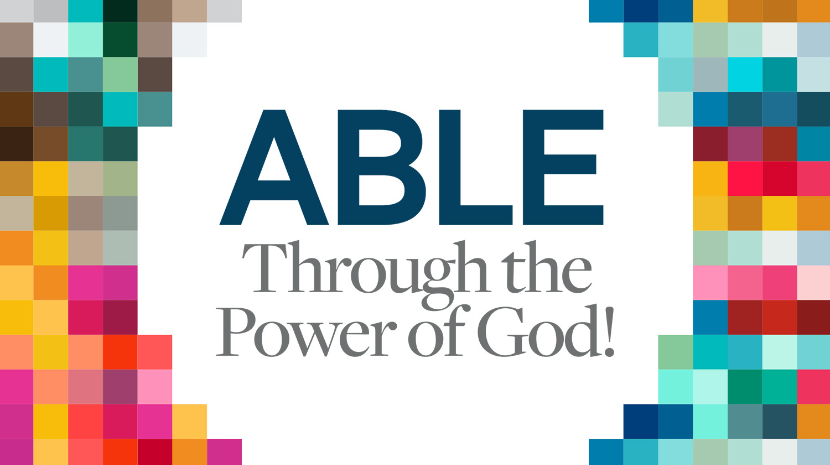From the November 2022 Issue

Thank You Jesus: The Guide of Gratitude
According to a study published in Applied Developmental Science, researchers found that grateful parents tend to raise thankful children. It doesn’t really take researchers to notice that. When children grow up watching their parents say, “Thank you,” and write thank-you notes, they learn by example. When youngsters soak in the atmosphere of thanksgiving, it leaves an impression. In thankful homes, parents talk about their daily blessings. Even in difficulty, they find things for which to be thankful. This creates optimistic hearts in children, and they find it easier to learn the art of gratitude.1
Thankfulness is a learned skill, and we learn best by seeing it modeled.
He is a Man of Gratitude—a Thank You Jesus.
He is a Man of Gratitude—a Thank You Jesus.
Thank You Jesus!
When He broke the five loaves and two fish to feed five thousand people, He gave thanks (John 6:11). He did the same when feeding the four thousand with seven loaves and fish (Matthew 15:36).
When His disciples grasped a truth He was teaching them, He prayed, “O Father, Lord of heaven and earth, thank you for hiding these things from those who think themselves wise and clever, and for revealing them to the childlike” (Matthew 11:25, NLT).
When He stood by the tomb of Lazarus, He prayed, “Father, I thank You that You have heard Me. And I know that You always hear Me” (John 11:41-42).
Jesus also teaches us to be thankful when we see what God is doing in the lives of others.
On the evening of His resurrection, He walked with some disciples to the town of Emmaus, answering their questions and explaining how His death and resurrection had fulfilled Old Testament prophecy. When asked to have dinner, “he took bread, gave thanks, broke it and began to give it to them” (Luke 24:30, NIV).
Imagine! The Creator of all sustenance gave thanks for simple provisions. He felt grateful for a loaf of bread, a few small fish, or a cup of wine in His hands. He was overjoyed that His disciples were grasping the lessons He was teaching. We can imagine Him going through the day saying, “Thank You, Father,” operating with a glad and grateful heart for the simplest blessings of each day and hour.
Even in difficult moments, we can say, “Thank You, Jesus!”
Thank You, Jesus!
That’s why He’s our Guide to thanksgiving and that’s also why we should constantly be whispering, “Thank You, Jesus!”
One of the simplest ways of doing this is learning to thank God for our food before each meal, as Jesus did. This is more important than we realize, for in the Bible there’s a holiness connected with eating in God’s presence. Exodus 24 says, “Moses and Aaron, Nadab and Abihu, and the seventy elders of Israel went up and saw the God of Israel. Under his feet was something like a pavement made of lapis lazuli, as bright blue as the sky…. They saw God, and they ate and drank” (verses 9-11, NIV).
In Emmaus, it was at mealtime that the disciples recognized Jesus, and then saw Him vanish! Jesus told us to ask God for our daily bread (Matthew 6:11), and the Bible says, “Therefore, whether you eat or drink, or whatever you do, do all to the glory of God” (1 Corinthians 10:31).
Pastor W. A. Criswell once visited the home of Christian workers in a primitive area of South America. There was no running water—only a washbasin in a rough cabinet made of boards. Meals were prepared on a makeshift counter and cooked on an old, dilapidated kerosene stove. The improvised table was simple. As Criswell sat down to eat with the missionary, his wife, and their three blonde, little girls in the one-room house, he saw a poem on the wall behind the kitchen counter. It said:
Bless my pretty kitchen, Lord.
Bless our meals with Thy presence
And warm them with Your grace.
Criswell began to cry as he read those words. He later said, “I’ve eaten in royal places but I never felt like that before.”2
Every meal is sacred in the Lord’s presence. Whether eating by ourselves or with friends, whether at home or in public, whether a feast or a bowl of soup, follow the example of Christ, especially if you are the host of the meal. Give thanks.
Jesus also teaches us to be thankful when we see what God is doing in the lives of others. Remember how He thanked His Father when the disciples began to grasp His teaching? He knew their childlike hearts were open to divine Truth.
He feels the same way when we find ourselves thrilled with His Word!
It reminds us of the joy and thanksgiving Paul expressed when his disciples made progress in grasping and living the Christian life. He told the Philippians, “I thank my God upon every remembrance of you, always in every prayer of mine making request for you all with joy” (Philippians 1:3-4).
Jesus also teaches us to thank God even by the gravesides of our loved ones in Christ. The scene by the tomb of Lazarus in John 11 is full of incredible lessons and insights. The grief there was intense, and Jesus shared it. He was emotionally distraught. He felt the sorrows of all the deathbed scenes through all the ages. He “groaned in the spirit and was troubled” (verse 33). He wept (verse 35). Coming closer to the tomb, He again groaned within Himself (verse 38).
But then He lifted His eyes toward heaven and thanked God for the reality of resurrection and the power of answered prayer (verse 41-42). With a loud voice, He commanded Lazarus to rise from the dead, and the former corpse staggered from the tomb, hindered only by his graveclothes (verses 43-44).
When we awaken each morning, we never know what the day will bring—good news or bad news, routine or disruption, laughter or tears. The uncertainty of our times renders us anxious. But there’s always something for which to thank God, and our gratitude is well-founded on the reality of resurrection. That’s why we don’t grieve as those who have no hope.
Even in difficult moments, we can say, “Thank You, Jesus!” Even amid tragedy, we can say, “This is devastating, but at least I can thank God for this or that.”
The Lord expects us to learn and practice these lessons.
The story is told about a boy who was playing on a pier. Suddenly he fell into the water. Some distance away, a soldier saw what was happening and ran with all his might. Diving into the water, he found the child and lifted him to the surface. Once back on land, he took the child home. This man was kindhearted and was thankful to have saved the boy’s life.
When the parents came to the door and heard what had happened, they looked at the soldier and said, “But where is his hat? We want to know where his hat is!” Instead of receiving gratitude, the soldier was scolded for not finding and retrieving the boy’s hat.
The Lord has saved our lives. He saw us fall into the deadly waters, and He jumped in after us. His love lifted us and saved us. We should go through life full of endless gratitude, but sometimes we lose the spirit of thanksgiving because we can’t find our hat, so to speak.
Remember, gratitude is learned. Oh, that every child could grow up in a home that practices thanksgiving as both a habit and an attitude. We can cultivate that in our hearts and homes right now. We can emulate the Man of Gratitude. He is our Guide to all the glorious aspects of thanksgiving.
Begin at once! Thank the Lord Jesus for something fresh and new right now, and say, “Thank You, Jesus,” to the Thank You Jesus!
Sources:
1William Rothenberg and others, “Grateful Parents Raising Grateful Children: Niche Selection and the Socialization of Child Gratitude,” Applied Developmental Science 21, no. 2 (2017): 106-120.
2Billy Keith, W. A. Criswell (Old Tappen, NJ: Fleming H. Revell, 1973), 207.
More Articles
This Month's Magazine Resource

The Whole Story
This year-long guided Bible study and a daily Bible reading plan is specifically designed for your spiritual journey in the new year ahead, with encouragement and inspiration to stay connected to God’s Word...your ultimate hope...every single day.
Subscribe Now
Each month, read articles and devotionals from Dr David Jeremiah that will encourage, challenge, and strengthen your walk with the Lord.




















